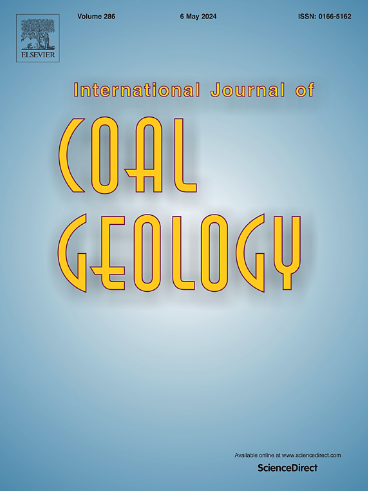Source rock potential and depositional environments of the Jurassic and Cretaceous coals from the Gyda Peninsula, Western Siberia
IF 5.7
2区 工程技术
Q2 ENERGY & FUELS
引用次数: 0
Abstract
Whether the coals in Western Siberia generated commercial volumes of liquid hydrocarbons is an important issue that remains controversial because it has not yet been definitively resolved. Organic petrography and geochemical investigations including Rock-Eval pyrolysis, elemental, isotope, and biomarker analyses were carried out to characterize in detail the hydrocarbon generation potential, type of organic matter, and depositional environment of the Cretaceous and Jurassic coals from the Gyda Peninsula in Western Siberia. The results indicate that the Jurassic coals primarily contain mixed gas-oil-prone Type II-III kerogen. In contrast, the Cretaceous coals exhibit a diverse generation potential with varied proportions of gas- and oil-prone kerogen types. Vitrinite reflectance of the studied coals suggests an immature to early mature stage for the Cretaceous coals and the thermally mature stage for the Jurassic coals, which is supported by maturity-related biomarker parameters and Tmax values. The carbon and nitrogen isotopic signatures in combination with biomarker data and maceral composition predominantly indicate terrestrial input. The presence of retene and simonellite suggests the contribution of conifers. Based on the obtained results, the Jurassic coals were likely to be deposited in limno-telmatic conditions with a rise in the water-level due to the sea expansion. The Cretaceous coals are probably deposited in bogs developed on the lower delta plain in limno-telmatic to telmatic environments with sudden episodes of flooding. Considering the type and thermal maturity of organic matter, the Jurassic coals show strong potential for hydrocarbon generation.
西西伯利亚吉达半岛侏罗系和白垩系煤的烃源岩潜力及沉积环境
西伯利亚西部的煤炭是否产生了商业规模的液态碳氢化合物,这是一个重要的问题,但仍存在争议,因为它尚未得到明确的解决。通过有机岩石学和地球化学研究,包括岩石热解、元素、同位素和生物标志物分析,详细表征了西伯利亚西部Gyda半岛白垩系和侏罗系煤的生烃潜力、有机质类型和沉积环境。结果表明,侏罗系煤主要含气-油混合型ⅱ-ⅲ型干酪根。白垩系煤的生烃潜力多样,亲油、气型比例不同。煤的镜质体反射率反映了白垩系煤的不成熟—早成熟阶段,侏罗系煤的热成熟阶段,成熟度相关生物标志物参数和Tmax值支持了这一结论。碳、氮同位素特征结合生物标志物数据和矿物组成主要表明陆源输入。保留石和单粒石的存在表明了针叶树的贡献。研究结果表明,侏罗系煤的沉积条件可能为浅层—浅层沉积,且由于海膨胀导致水位上升。白垩系煤可能沉积在湖底—湖底—湖底环境下三角洲平原发育的沼泽中,并伴有突发性洪水。从有机质类型和热成熟度来看,侏罗系煤具有较强的生烃潜力。
本文章由计算机程序翻译,如有差异,请以英文原文为准。
求助全文
约1分钟内获得全文
求助全文
来源期刊

International Journal of Coal Geology
工程技术-地球科学综合
CiteScore
11.00
自引率
14.30%
发文量
145
审稿时长
38 days
期刊介绍:
The International Journal of Coal Geology deals with fundamental and applied aspects of the geology and petrology of coal, oil/gas source rocks and shale gas resources. The journal aims to advance the exploration, exploitation and utilization of these resources, and to stimulate environmental awareness as well as advancement of engineering for effective resource management.
 求助内容:
求助内容: 应助结果提醒方式:
应助结果提醒方式:


